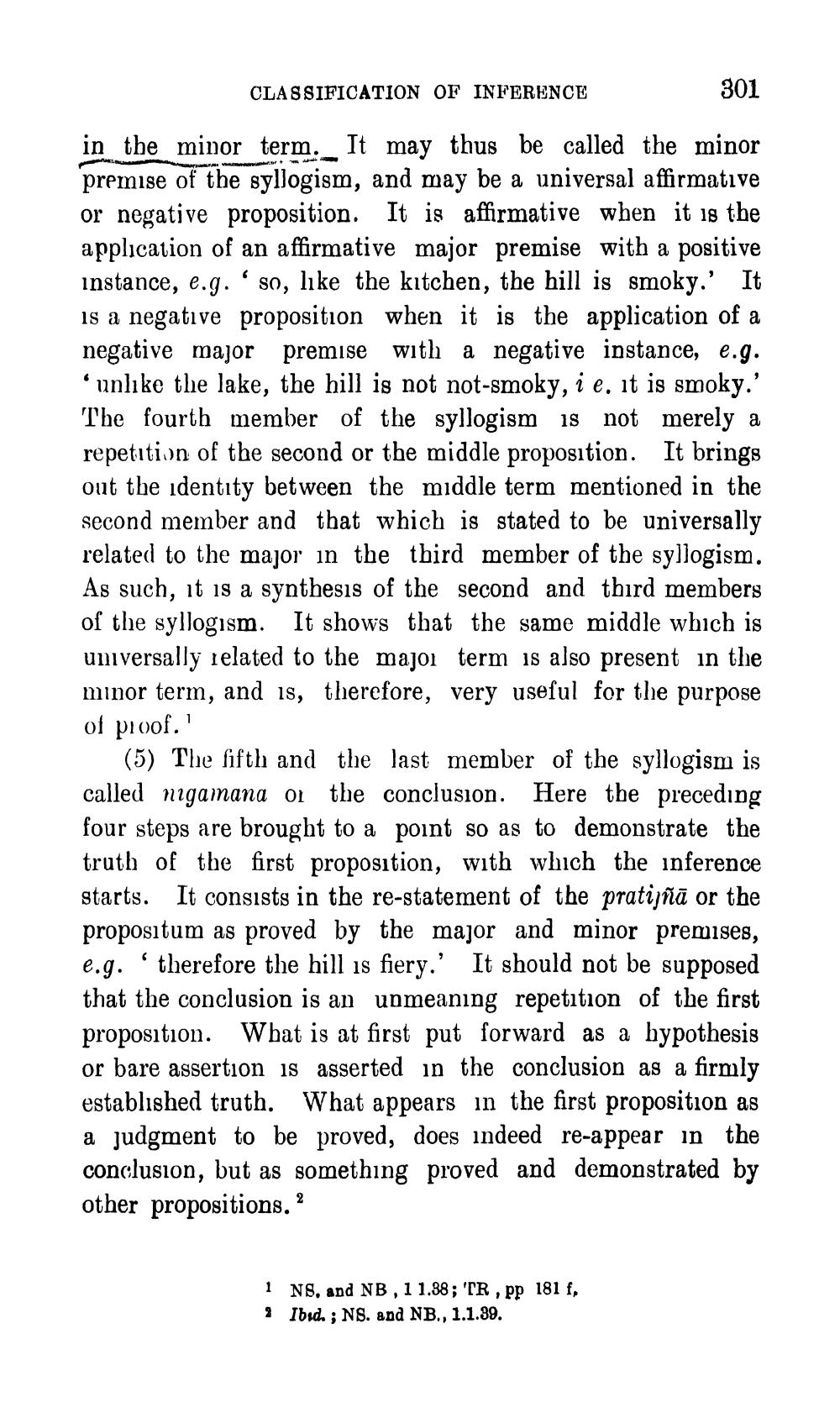________________
301
"
in the minor term. It may thus be called the minor premise of the syllogism, and may be a universal affirmative or negative proposition. It is affirmative when it is the application of an affirmative major premise with a positive instance, e.g. so, like the kitchen, the hill is smoky.' It is a negative proposition when it is the application of a negative major premise with a negative instance, e.g. unlike the lake, the hill is not not-smoky, i e. it is smoky.' The fourth member of the syllogism is not merely a repetition of the second or the middle proposition. It brings out the identity between the middle term mentioned in the second member and that which is stated to be universally related to the major in the third member of the syllogism. As such, it is a synthesis of the second and third members of the syllogism. It shows that the same middle which is universally related to the major term is also present in the minor term, and is, therefore, very useful for the purpose of proof.
(5) The fifth and the last member of the syllogism is called nigamana or the conclusion. Here the preceding four steps are brought to a point so as to demonstrate the truth of the first proposition, with which the inference starts. It consists in the re-statement of the pratijñā or the propositum as proved by the major and minor premises, e.g. 'therefore the hill is fiery.' It should not be supposed that the conclusion is an unmeaning repetition of the first proposition. What is at first put forward as a hypothesis or bare assertion is asserted in the conclusion as a firmly established truth. What appears in the first proposition as a judgment to be proved, does indeed re-appear in the conclusion, but as something proved and demonstrated by other propositions.2
•
CLASSIFICATION OF INFERENCE
1 NS, and NB, 11.88; 'TR, pp 181 f,
2 Ibid.; NS. and NB., 1.1.39.




